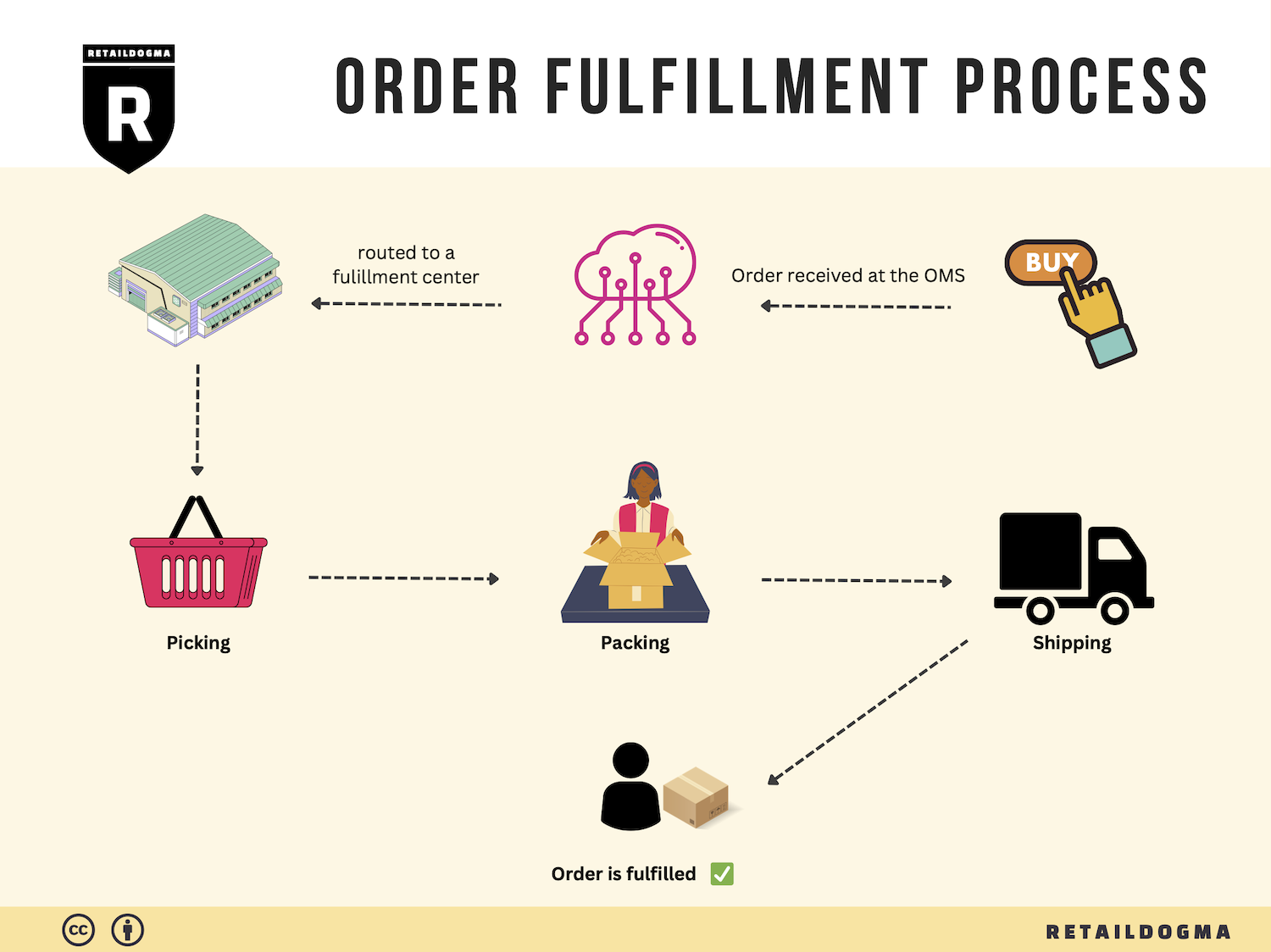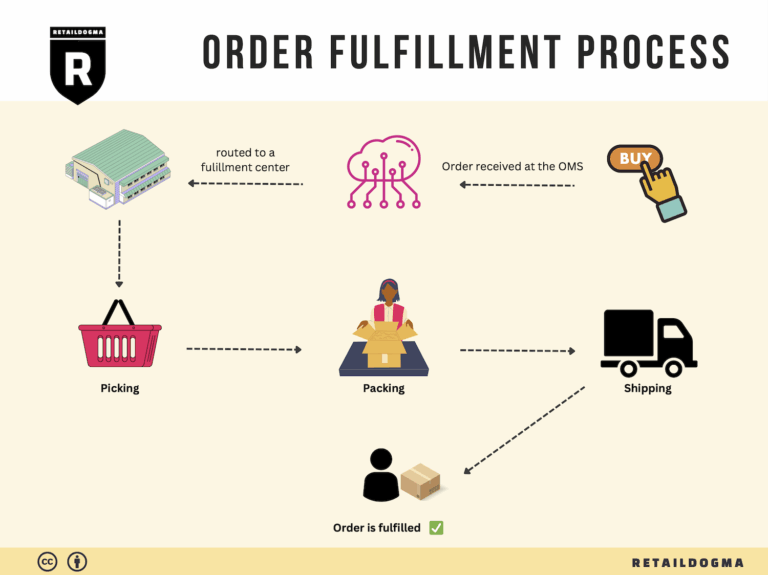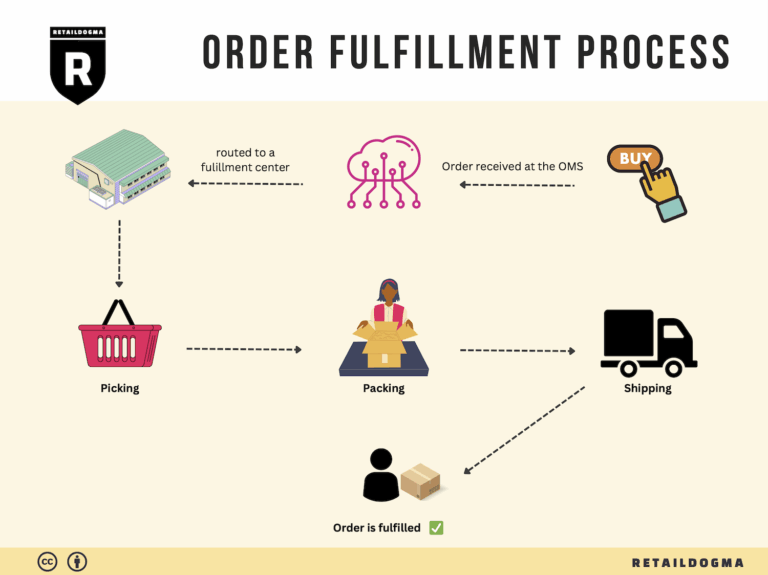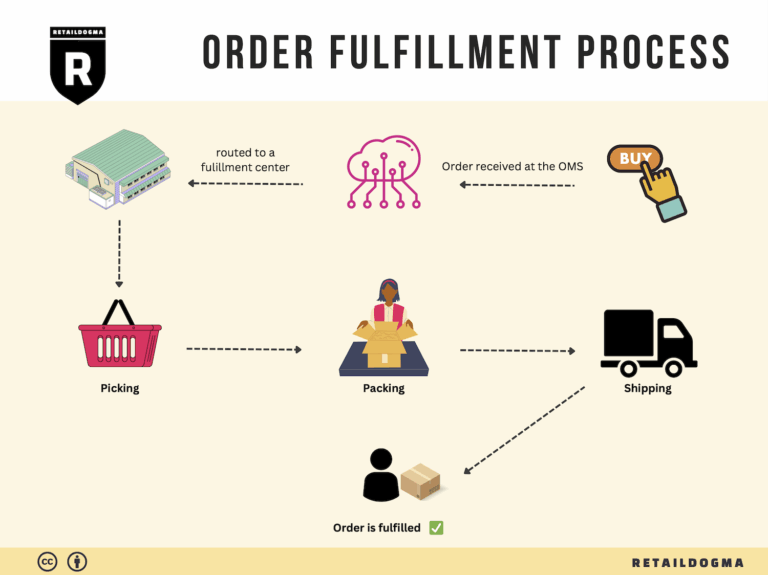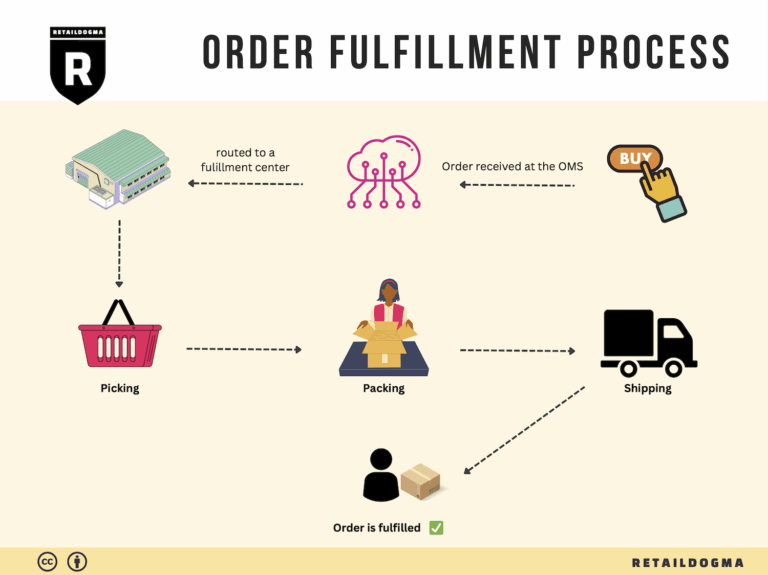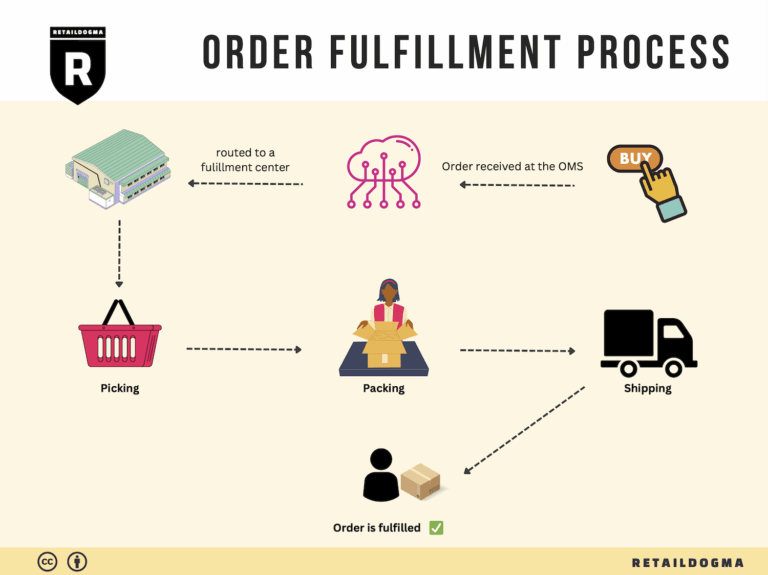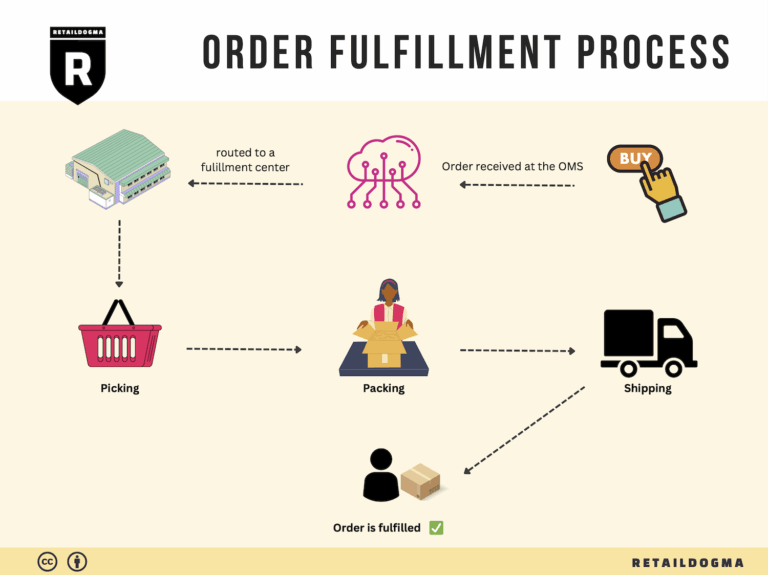How Order Fulfillment Works: A Step-by-Step Guide for Businesses
What is E-commerce Fulfillment? An Introduction for Growing Businesses
As e-commerce businesses scale, one of the most common pain points they encounter is the overwhelming task of packing and shipping orders. Initially, managing fulfillment might feel manageable, but as sales grow, so do the complexities of order processing, inventory management, and logistics. This is where effective e-commerce fulfillment comes into play—it’s the backbone of your online business, ensuring that products reach customers efficiently and accurately.
Understanding Fulfillment
At its core, fulfillment is the process of getting a product from your inventory to the customer’s doorstep. It encompasses everything from receiving and storing inventory to packing orders and handling returns. As your business expands, it’s crucial to streamline this process to maintain customer satisfaction and operational efficiency.
What This Guide Covers
In this guide, we’ll explore various fulfillment models that can help you scale your operations. You’ll learn about Third-Party Logistics (3PL) providers, which can take the burden of warehousing and shipping off your shoulders, and Fulfillment by Amazon (FBA), a service that allows you to leverage Amazon’s vast logistics network to enhance your reach and efficiency.
We will also delve into the core services that fulfillment centers offer, such as inventory management, order processing, and returns handling. Understanding these services will help you identify which offerings align best with your business needs.
Choosing the right fulfillment partner is critical. This guide will provide insights on what to consider when evaluating potential partners, including their technology capabilities, service levels, and geographical reach.
Finally, we’ll discuss pricing models associated with fulfillment services, helping you to understand the costs involved and how they can impact your bottom line.
Empowering Smart Decisions
Our goal with this guide is to empower e-commerce business owners, operations managers, and entrepreneurs with the knowledge needed to make informed decisions about their logistics strategies. By understanding the fulfillment landscape and available options, you can select the right solutions that will not only enhance your operational efficiency but also elevate your customer experience. Whether you are just starting out or looking to optimize your current fulfillment process, this guide is designed to support your journey toward scalable success.
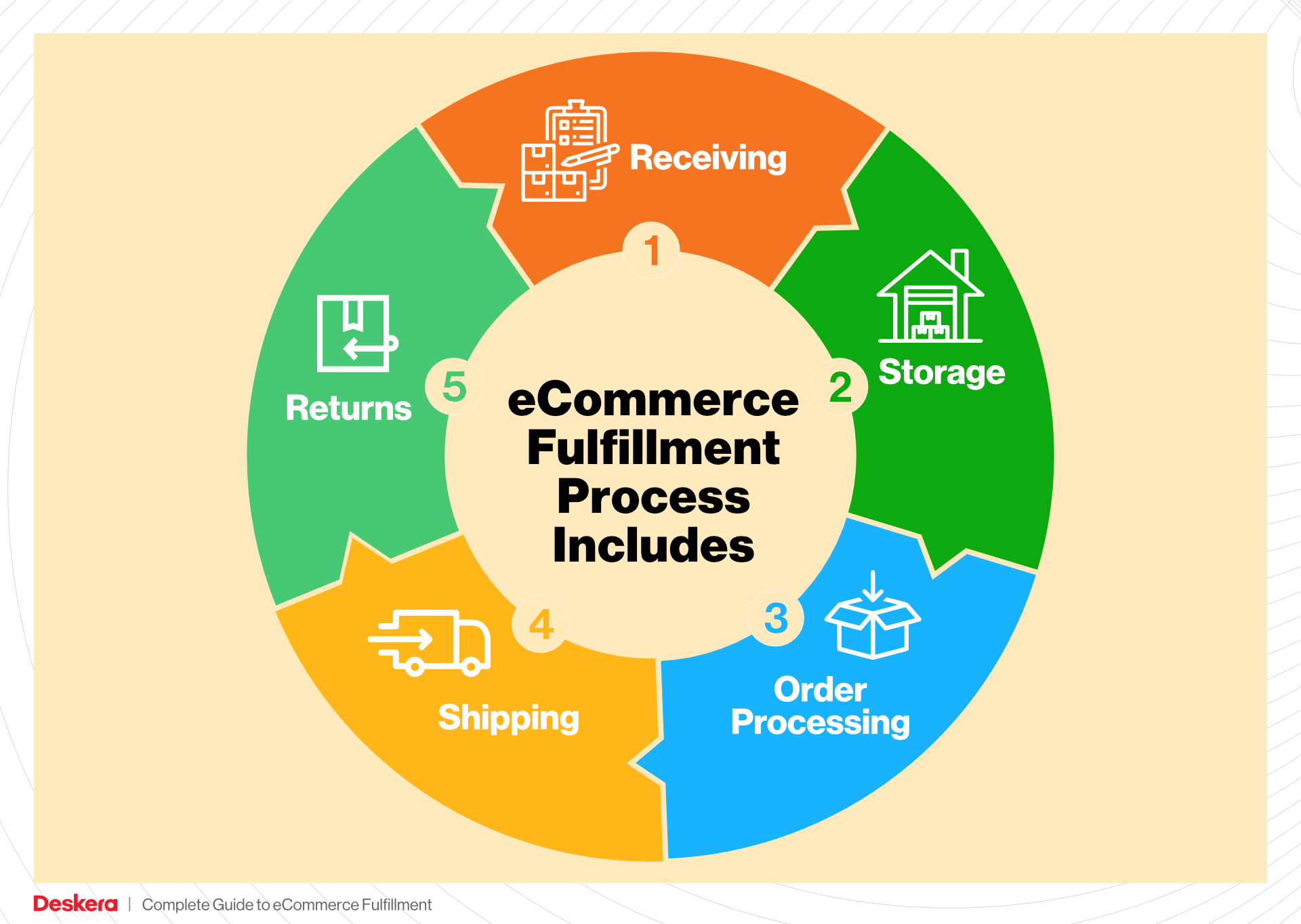
What You’ll Learn In This Guide
- What is E-commerce Fulfillment? An Introduction for Growing Businesses
- The Order Fulfillment Process: From ‘Buy’ Button to Customer’s Door
- Comparing Fulfillment Models: In-House vs. 3PL vs. Dropshipping
- A Deep Dive into Amazon FBA: Pros, Cons, and Who It’s For
- Core Services Offered by Fulfillment Centers
- How to Choose a Fulfillment Partner: A 6-Point Checklist
- Understanding Fulfillment Pricing: A Breakdown of Common Fees
- Frequently Asked Questions (FAQs) about Fulfillment
- Conclusion: Is Outsourcing Fulfillment the Right Move for Your Business?
- Important Disclaimer
The Order Fulfillment Process: From ‘Buy’ Button to Customer’s Door
1. Receiving Inventory
The first step in the order fulfillment process is receiving inventory. When products arrive at the Amazon Fulfillment Center, they undergo a thorough receiving process that involves checking the shipments against purchase orders. This step is crucial for ensuring that the correct items and quantities are received, which prevents stock discrepancies and potential disruptions in order processing.
During this phase, each product is assigned a Stock Keeping Unit (SKU), a unique identifier that helps track inventory levels and locations within the warehouse. Efficient receiving practices reduce the time products spend in transit and facilitate quicker availability for customer orders. Businesses should invest in technology such as barcode scanners and inventory management systems to streamline this process and enhance accuracy.
2. Warehouse Storage
Once inventory is received, it is stored in the fulfillment center. Proper warehouse storage is essential for maintaining an organized and efficient environment that supports fast order processing. Products are strategically placed based on various factors, including size, weight, and demand frequency. This organization allows for optimal space utilization and easier access to frequently ordered items.
The use of advanced storage solutions, such as shelving systems and automated storage and retrieval systems (AS/RS), can significantly enhance the efficiency of warehouse storage. Key terms associated with this step include “slotting,” which refers to the process of determining the best storage location for each item. Effective slotting practices lead to reduced picking times and improved overall operational efficiency.
3. Order Picking
The next step is order picking, where items are selected from storage to fulfill customer orders. This process can be executed manually or through automated systems, depending on the volume of orders and the facility’s technological capabilities. Order picking is a critical stage in the fulfillment process, as it directly impacts delivery times and customer satisfaction.
In a high-volume environment like Amazon’s BHM1 fulfillment center, picking is often done using “pick lists,” which are generated based on customer orders. These lists guide workers or robots to the exact locations of the items needed for each order. Implementing efficient picking strategies, such as batch picking (picking multiple orders at once) or wave picking (picking items based on specific criteria), can greatly enhance productivity and accuracy. Businesses should continuously evaluate their picking methods to optimize speed and reduce errors.
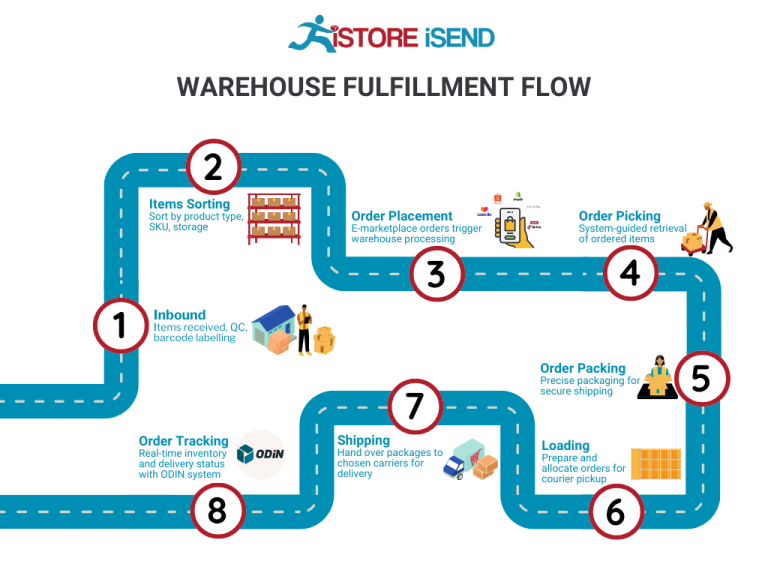
4. Order Packing
After items are picked, they move to the order packing stage. Proper packing is vital for ensuring that products are protected during transit and arrive at the customer’s location in excellent condition. This step involves selecting the right packaging materials, such as boxes, bubble wrap, or padding, to safeguard the items during shipping.
Quality control plays a significant role in this phase, as each order is checked to ensure that the correct items are packed and that packaging standards are met. A key term associated with this step is “packing slips,” which provide essential information about the order and help with inventory management. By investing in efficient packing processes and materials, businesses can reduce the likelihood of returns due to damaged goods and enhance customer satisfaction.
5. Shipping & Delivery
The final step in the order fulfillment process is shipping and delivery. Once orders are packed, they are labeled and sorted for shipment based on destination and delivery method. This stage is crucial for meeting customer expectations regarding delivery speed and accuracy.
Shipping logistics can involve various carriers and delivery options, including standard shipping, expedited shipping, or same-day delivery. Utilizing technology to track shipments and provide customers with real-time updates can significantly improve the customer experience. The term “last-mile delivery” is particularly relevant here, as it refers to the final leg of the shipping journey from the distribution center to the customer’s door. Efficient last-mile strategies are essential for ensuring timely and reliable delivery, which can ultimately enhance customer loyalty and drive repeat business.
By understanding and optimizing each of these steps in the order fulfillment process, e-commerce businesses can scale their operations, improve efficiency, and deliver exceptional customer experiences.
Comparing Fulfillment Models: In-House vs. 3PL vs. Dropshipping
Fulfillment Model Comparison
| Model | Who Handles Inventory | Best For (Business Stage) | Key Advantage | Key Disadvantage |
|---|---|---|---|---|
| In-House Fulfillment | Business itself | Established businesses | Full control over inventory and operations | High overhead costs and resource-intensive |
| Third-Party Logistics (3PL) | Third-party provider | Growing businesses | Scalability and flexibility in operations | Less control over inventory and potential delays |
| Dropshipping | Supplier | Startups and small businesses | Low upfront investment and minimal risk | Lower profit margins and reliance on suppliers |
In-House Fulfillment
In-house fulfillment is a model where businesses manage their own inventory and logistics operations. This approach is most suitable for established businesses that have a steady volume of orders and the resources to invest in warehousing, staffing, and technology. The primary advantage of in-house fulfillment is the complete control it provides over inventory, order processing, and customer service. Businesses can establish their own protocols, ensuring quality and efficiency tailored to their unique needs. However, this model comes with significant disadvantages, including high overhead costs related to maintaining a warehouse, hiring and training staff, and investing in inventory management systems. Moreover, as order volumes fluctuate, businesses may find it challenging to scale operations effectively without incurring additional costs.
Third-Party Logistics (3PL)
Third-party logistics (3PL) involves outsourcing logistics operations to a specialized provider. This model is ideal for growing businesses that need to scale quickly without the burden of managing inventory and fulfillment in-house. 3PL providers offer a range of services, including warehousing, order processing, and shipping, allowing businesses to focus on core activities like marketing and sales. The key advantage of utilizing a 3PL is scalability; businesses can easily adjust their logistics needs based on demand without significant investments in infrastructure. However, the trade-off is a reduced level of control over inventory and fulfillment processes. Businesses may experience delays or miscommunications, which can impact customer satisfaction. Additionally, the costs associated with 3PL services can vary, potentially affecting profit margins if not managed carefully.
Dropshipping
Dropshipping is a fulfillment method where the retailer does not hold inventory but instead partners with suppliers who ship products directly to customers. This model is particularly beneficial for startups and small businesses with limited capital, as it requires minimal upfront investment in inventory. The primary advantage of dropshipping is the low risk involved; businesses can offer a wide range of products without the financial burden of purchasing inventory upfront. This flexibility allows entrepreneurs to test new products and markets without significant capital investment. However, dropshipping has notable disadvantages, including lower profit margins due to reliance on suppliers and potential delays in shipping. Retailers also face challenges in maintaining quality control, as they have limited oversight over the fulfillment process. Additionally, the success of a dropshipping business heavily relies on the reliability of suppliers, which can be a significant risk.
Conclusion
Choosing the right fulfillment model is crucial for e-commerce businesses seeking to scale their operations effectively. In-house fulfillment offers control and customization but requires substantial investment and resources. Third-party logistics provide flexibility and scalability, making it an attractive option for growing businesses, albeit with some loss of control. Dropshipping allows for low-risk entry into the market, but with challenges related to profit margins and supplier reliability. Business owners must carefully assess their current operations, growth potential, and logistical capabilities when selecting a fulfillment model that aligns with their strategic objectives.
A Deep Dive into Amazon FBA: Pros, Cons, and Who It’s For
Understanding Fulfillment by Amazon (FBA)
Fulfillment by Amazon (FBA) is a service provided by Amazon that allows sellers to store their products in Amazon’s fulfillment centers. In turn, Amazon takes care of storage, packaging, and shipping of these products to customers. This service enables sellers to leverage Amazon’s extensive logistics network, offering them an opportunity to scale their business without the overhead associated with traditional warehousing and shipping operations.
How FBA Works
-
Sign Up for FBA: Sellers start by creating an Amazon Seller account and opting for FBA. This involves agreeing to Amazon’s terms and conditions and selecting the products they wish to fulfill through FBA.
-
Prepare Products: Sellers must prepare their products according to Amazon’s guidelines, which include specific packaging and labeling requirements. This ensures that items are stored and shipped correctly.
-
Ship to Amazon: Once products are prepared, sellers ship their inventory to Amazon’s fulfillment centers. The Bessemer Amazon Fulfillment Center (BHM1), for example, is equipped to handle a large volume of orders efficiently, thanks to its automation and operational excellence.
-
Storage: After the products arrive at the fulfillment center, they are stored in Amazon’s warehouse until an order is placed. Amazon manages the inventory and ensures that products are readily available for dispatch.
-
Order Processing: When a customer places an order, Amazon picks, packs, and ships the product on behalf of the seller. This process is streamlined through advanced automation and a skilled workforce, ensuring quick and accurate fulfillment.
-
Customer Service and Returns: Amazon also handles customer service inquiries and returns for FBA orders, allowing sellers to focus on other aspects of their business.
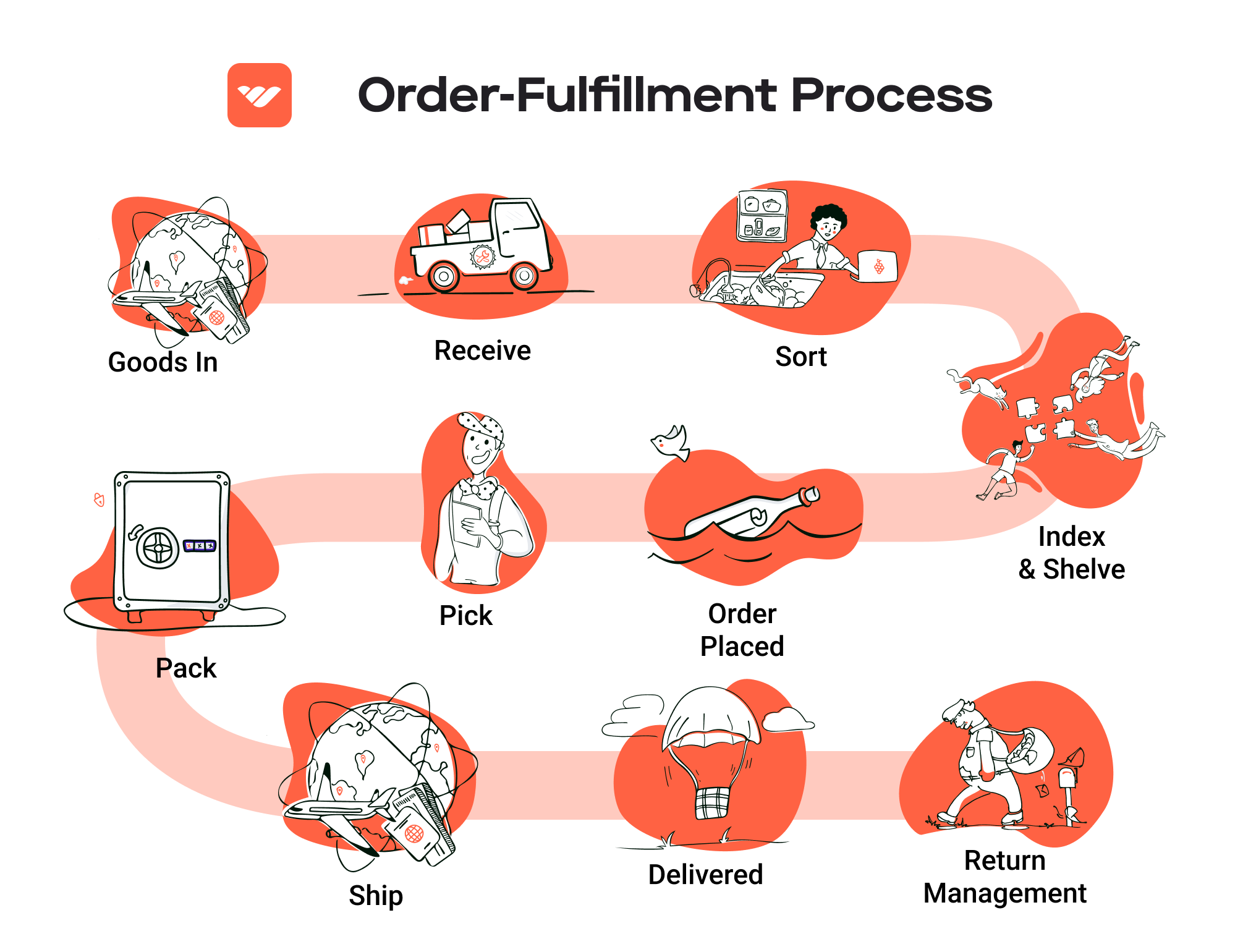
Pros of FBA
-
Prime Eligibility: Products fulfilled by Amazon are automatically eligible for Amazon Prime, which can significantly increase visibility and sales. Prime members often prefer products that offer fast, free shipping.
-
Customer Trust: Selling through Amazon’s platform adds a layer of credibility. Customers often trust Amazon’s fulfillment process, which can lead to higher conversion rates.
-
Multi-Channel Fulfillment: FBA allows sellers to fulfill orders from other sales channels, such as their own websites or eBay. This flexibility can enhance a seller’s reach and customer base.
-
Scalability: FBA allows businesses to scale without investing heavily in logistics infrastructure. Sellers can easily adjust their inventory levels based on demand without worrying about storage limitations.
-
Streamlined Operations: By outsourcing fulfillment to Amazon, sellers can focus on product development, marketing, and customer engagement rather than logistics.
Cons of FBA
-
High Fees: One of the most significant drawbacks of FBA is the cost. Amazon charges various fees, including storage fees and fulfillment fees. These costs can eat into profit margins, especially for low-priced items.
-
Strict Inventory Rules: Amazon has stringent inventory management guidelines. Sellers must adhere to these rules, which can include limits on how much inventory can be stored and how often products need to be replenished.
-
Commingling Risks: FBA products can be commingled with other sellers’ inventory, which can lead to issues if a customer receives the wrong item. This risk necessitates careful management of product listings and customer service.
-
Less Control Over Fulfillment: While outsourcing fulfillment can be beneficial, it also means less control over the shipping process. Sellers may find it challenging to manage delivery times and customer service quality.
-
Potential for Stockouts: If a seller does not manage inventory levels effectively, they risk running out of stock, which can lead to lost sales and lower product rankings on Amazon.
Who is FBA Best For?
Fulfillment by Amazon is particularly suited for:
-
Small to Medium-Sized Businesses: Businesses looking to scale without the overhead of a logistics operation can benefit greatly from FBA. This service allows them to access Amazon’s extensive logistics capabilities.
-
E-commerce Entrepreneurs: New sellers who want to leverage Amazon’s platform to reach a larger audience will find FBA advantageous. It simplifies logistics and allows them to focus on growing their business.
-
Brands Looking to Enhance Visibility: Companies wanting to tap into the Amazon marketplace and gain visibility through Prime eligibility can significantly benefit from FBA.
-
Sellers with High Sales Volume: Those who can move a high volume of products can offset the costs associated with FBA fees, making it a more economical choice.
-
Businesses with Diverse Product Lines: Companies that offer various products can take advantage of FBA’s multi-channel fulfillment capabilities to streamline operations across different sales platforms.
In conclusion, while FBA offers numerous advantages such as enhanced visibility and operational efficiency, it’s essential for sellers to weigh these benefits against the costs and potential challenges. Understanding the nuances of FBA can empower e-commerce businesses to make informed decisions about their fulfillment strategy, ultimately driving growth and customer satisfaction.
Core Services Offered by Fulfillment Centers
Inventory Management & Warehousing
Inventory management and warehousing are foundational services provided by fulfillment centers, encompassing the systematic control of stock levels and the storage of products. In a typical fulfillment center, like the Amazon Fulfillment Center – BHM1, vast spaces are utilized to store a diverse range of products. This service not only involves physically storing items but also entails tracking inventory levels in real-time through advanced software systems.
The benefits of efficient inventory management are manifold. For e-commerce businesses, it ensures that products are readily available to meet customer demand, thereby minimizing stockouts and lost sales opportunities. Furthermore, effective inventory management helps businesses optimize their storage costs and reduce wastage by ensuring that products are rotated and managed correctly. With sophisticated inventory tracking, businesses can gain insights into sales trends, allowing for informed purchasing decisions and improved cash flow management.
Pick and Pack Services
Pick and pack services are critical to the order fulfillment process, where items are selected from the warehouse and packed for shipping. In fulfillment centers like BHM1, automation plays a significant role, with advanced robotics and conveyor systems facilitating quick and accurate picking of products. Once items are picked, they are carefully packed to ensure they arrive at their destination in perfect condition.
This service offers substantial benefits for e-commerce businesses. Firstly, it enhances order accuracy, which is vital for maintaining customer satisfaction and loyalty. Mistakes in order fulfillment can lead to returns and negative reviews, impacting the overall reputation of a business. Additionally, the speed at which orders are processed can significantly affect delivery times. A streamlined pick and pack operation ensures that orders are dispatched promptly, allowing businesses to offer competitive shipping options that attract more customers.
Kitting and Assembly
Kitting and assembly services involve the grouping of individual items into a single ready-to-ship package or the assembly of products that require multiple components. For instance, a business selling a DIY furniture kit may need its components (like screws, boards, and tools) packaged together for convenience. Fulfillment centers like BHM1 are equipped to handle these tasks efficiently, often utilizing specialized labor and equipment to ensure precision.
The primary benefit of kitting and assembly services is the enhancement of product presentation and customer convenience. By delivering products in a complete kit, businesses can improve the customer experience and reduce the likelihood of returns due to missing components. This service also allows e-commerce companies to offer unique product bundles, increasing average order value and encouraging upselling opportunities. Moreover, efficient kitting can streamline inventory management by reducing the number of SKUs and simplifying the fulfillment process.
Returns Management (Reverse Logistics)
Returns management, or reverse logistics, is an essential service offered by fulfillment centers that deals with the process of handling returned goods. This includes receiving returned items, inspecting them for quality, restocking sellable items, and managing the disposal of damaged goods. In a fulfillment center like BHM1, returns are processed swiftly to minimize disruption to inventory levels and maximize the recovery of value from returned products.
The benefits of effective returns management are significant for e-commerce businesses. A well-structured returns process enhances customer trust and satisfaction, as customers are more likely to shop with retailers that offer hassle-free returns. Moreover, efficient returns processing allows businesses to quickly restock items that are still sellable, thereby reducing losses. This service can also provide valuable data on return reasons, enabling businesses to make informed decisions on product quality and customer preferences, ultimately leading to improved product offerings and sales strategies.
In conclusion, leveraging the core services offered by fulfillment centers can dramatically enhance an e-commerce business’s operational efficiency and customer satisfaction. By focusing on inventory management, pick and pack services, kitting and assembly, and returns management, businesses can scale effectively while maintaining a high level of service that meets the demands of today’s consumers.
How to Choose a Fulfillment Partner: A 6-Point Checklist
Location & Warehouse Network
Choosing a fulfillment partner with an optimal location is crucial for ensuring timely deliveries and minimizing shipping costs. The geographic positioning of warehouses can significantly affect logistics efficiency, especially if your customer base is spread across different regions.
Key Questions to Ask:
– Where are your fulfillment centers located, and how do these locations align with my target market?
– How many warehouses do you operate, and what is their capacity?
– Do you have a network of warehouses that can facilitate faster shipping options, such as same-day or next-day delivery?
Technology & Integrations
The technology infrastructure of a fulfillment partner plays a pivotal role in managing inventory, processing orders, and providing real-time tracking. A robust system can enhance operational efficiency and improve customer satisfaction by ensuring orders are fulfilled accurately and promptly.
Key Questions to Ask:
– What order management system (OMS) do you use, and how does it integrate with my e-commerce platform?
– Can your technology provide real-time inventory updates and tracking information?
– Do you offer automated solutions for inventory management, picking, packing, and shipping?
Specializations (e.g., Cold Storage, Oversized Items)
Depending on the nature of your products, you may require specific services that cater to unique storage and shipping needs. For example, if you sell perishable goods, you’ll need a partner with cold storage capabilities. Similarly, if your products are large or fragile, specialized handling may be necessary.
Key Questions to Ask:
– What types of products do you specialize in fulfilling, and do you have the necessary facilities for my product types?
– Can you handle any special requirements for my products, such as temperature control or special packaging?
– What experience do you have in managing products similar to mine?
Scalability & Capacity
As your business grows, your fulfillment partner should be able to scale operations accordingly. This means having the capacity to handle increased order volumes and the flexibility to adapt to your changing needs without compromising service quality.
Key Questions to Ask:
– What is your current capacity, and how do you manage seasonal fluctuations in order volume?
– How quickly can you accommodate an increase in order volume, and what processes are in place to ensure quality during scaling?
– Do you have plans for future expansion, and how might that impact our partnership?
Pricing and Contracts
Understanding the pricing structure and contract terms is essential for maintaining control over your operational costs. Transparent pricing helps you budget effectively and avoid unexpected fees that could impact your margins.
Key Questions to Ask:
– What is your pricing model? Are costs based on volume, weight, or a combination of factors?
– Are there any hidden fees, such as for storage, handling, or returns?
– What are the terms of the contract? Is it flexible, and what are the termination clauses?
Customer Support & Reviews
Effective customer support can significantly enhance your operational efficiency and improve your relationship with your fulfillment partner. Additionally, researching reviews and testimonials can provide insights into the partner’s reliability and service quality.
Key Questions to Ask:
– What kind of customer support do you offer? Is it available 24/7?
– How do you handle issues or errors in order fulfillment, and what is your process for resolution?
– Can you provide references or case studies from other clients in my industry?
Conclusion
Choosing the right fulfillment partner is a critical decision that can affect your e-commerce business’s efficiency and customer satisfaction. By using this checklist, you can systematically evaluate potential partners based on key operational criteria. Make sure to engage in thorough discussions, ask the right questions, and gather comprehensive information to make an informed choice that aligns with your business goals.
Understanding Fulfillment Pricing: A Breakdown of Common Fees
Initial Setup Fees
When engaging with a fulfillment center like Amazon’s BHM1, businesses often encounter initial setup fees. These charges cover the costs associated with onboarding your products into the fulfillment system. The fees may include costs for account creation, system integration, and any necessary training for your team to navigate the platform effectively.
The calculation of initial setup fees can vary based on the complexity of your inventory and the integration requirements. For example, if you have a significant number of SKU (Stock Keeping Units) or require specialized software integration, your setup fees may be higher. It’s important to understand the specifics of what these fees cover and to clarify any additional costs that may arise during the onboarding process.
Receiving Fees
Receiving fees are charged for the process of accepting and logging your inventory into the fulfillment center. This fee typically covers the labor and equipment costs associated with unloading, inspecting, and sorting your products upon arrival.
These fees can be calculated on a per-unit basis or as a flat fee per shipment, depending on the fulfillment center’s pricing structure. If your products are pre-packaged and labeled according to the fulfillment center’s specifications, you may benefit from lower receiving fees. It’s advisable to ensure that your products meet these requirements to minimize costs.
Storage Fees (per pallet/bin)
Storage fees are incurred for the space your inventory occupies within the fulfillment center. These fees are usually calculated on a monthly basis and can be charged per pallet or per bin, depending on how the warehouse organizes its inventory.
For businesses with high inventory turnover, storage fees may be a minor cost. However, for those with slower-moving products, these fees can accumulate quickly. Understanding the dimensions and weight of your products can help you estimate potential storage costs. Additionally, some fulfillment centers may offer discounted rates for long-term storage or for businesses that maintain a consistent inventory level, so it’s beneficial to inquire about these options.
Pick & Pack Fees (per item/order)
Pick and pack fees are charged for the process of selecting products from the warehouse shelves and preparing them for shipment. This fee typically covers labor costs and packaging materials used during the packing process.
The calculation of pick and pack fees can vary widely based on the complexity of your orders. For instance, if your orders contain multiple items or require special packaging, the fees may be higher. Conversely, if you have simple, single-item orders, the fees may be lower. It’s also essential to consider whether the fulfillment center offers bulk order processing discounts, which can significantly reduce costs for businesses with high order volumes.
Shipping Fees
Shipping fees are charged for the transportation of your products from the fulfillment center to the customer. These fees can vary based on several factors, including the shipping method chosen (standard, expedited, etc.), the weight and dimensions of the package, and the destination.
Fulfillment centers like BHM1 typically have established relationships with various carriers, which can lead to reduced shipping rates due to volume discounts. Understanding the shipping options available and their associated costs will allow you to choose the most cost-effective methods for your business. It’s also advisable to regularly review shipping costs, as they can fluctuate based on fuel prices and carrier pricing strategies.
Conclusion: Tips for Getting an Accurate Quote
To obtain an accurate quote for fulfillment services, it’s essential to clearly outline your business needs and inventory characteristics. Here are some practical tips:
-
Provide Detailed Information: Offer specifics about your products, including dimensions, weight, and packaging requirements. The more detailed your information, the more accurate the quote.
-
Ask About Fee Structures: Inquire about how each fee is calculated, including any potential discounts for volume or long-term contracts.
-
Understand Additional Charges: Ask about any potential hidden fees that may arise, such as for returns or special handling.
-
Compare Multiple Quotes: Don’t hesitate to get quotes from multiple fulfillment centers. This will give you a better understanding of the market rates and help you negotiate better terms.
-
Review Terms Regularly: Fulfillment needs can change as your business scales, so regularly reviewing your agreement and the associated costs can help you remain competitive.
By taking these steps, you can ensure that you’re fully aware of the fulfillment pricing landscape and can make informed decisions that align with your business goals.
Frequently Asked Questions (FAQs) about Fulfillment
1. What is the Amazon Fulfillment Center BHM1?
The Amazon Fulfillment Center BHM1, located in Bessemer, Alabama, is an 850,000 square-foot logistics hub designed to support Amazon’s extensive e-commerce operations. This facility plays a crucial role in processing, sorting, and shipping a wide variety of products to customers, ensuring timely deliveries through advanced automation and skilled workforce.
2. How does the fulfillment process work at BHM1?
At BHM1, the fulfillment process involves several key steps: receiving products, sorting them using automated systems, packing items into appropriate shipping containers, and finally, shipping them out to customers. Each stage is optimized for efficiency and accuracy, allowing for high volume order processing with minimal delays.
3. What types of products are handled at the BHM1 facility?
The BHM1 fulfillment center manages a diverse range of products, including electronics, household goods, clothing, and more. Its advanced sorting systems and automation capabilities enable it to handle thousands of different items simultaneously, catering to the varied needs of Amazon’s customer base.
4. What is the difference between a warehouse and a fulfillment center?
While both warehouses and fulfillment centers are used for storage, the primary difference lies in their functions. A warehouse is mainly focused on storing products, whereas a fulfillment center is designed for the entire process of order fulfillment, including receiving, picking, packing, and shipping products directly to customers. Fulfillment centers are typically more integrated with e-commerce operations.
5. What are the advantages of using Amazon BHM1 for fulfillment services?
Utilizing Amazon BHM1 offers several advantages, including:
– Speed: Advanced automation and efficient processes ensure quick order processing.
– Scalability: Businesses can easily scale their operations without the need for additional infrastructure.
– Reliability: Amazon’s established logistics network enhances delivery reliability.
– Cost-Effectiveness: Leveraging Amazon’s infrastructure can lead to reduced shipping costs for businesses.
6. How much do fulfillment services cost at BHM1?
The cost of fulfillment services at Amazon BHM1 can vary based on several factors, including the volume of orders, types of products being handled, and specific services required (e.g., packaging, storage). Generally, businesses can expect to pay fees that include storage costs per cubic foot and fulfillment fees per order or item shipped. For detailed pricing, it’s best to consult Amazon’s seller services or fulfillment pricing guides.
7. What is a 3PL, and how does it relate to BHM1?
A 3PL, or third-party logistics provider, is a service that allows businesses to outsource their logistics and fulfillment operations. Amazon BHM1 functions as a 3PL for many e-commerce businesses, providing them with storage, order processing, and shipping services. This allows businesses to focus on growth and sales without managing the complexities of logistics.
8. How does Amazon ensure quality control at the BHM1 facility?
Quality control at BHM1 is maintained through strict procedures at every stage of the fulfillment process. This includes regular inventory checks, thorough packing inspections, and adherence to quality assurance standards. These measures help ensure that customers receive the correct items in excellent condition, thus upholding Amazon’s reputation for quality service.
9. Can businesses track their inventory and shipments through BHM1?
Yes, businesses utilizing fulfillment services at BHM1 can track their inventory and shipments through Amazon’s online platform. The system provides real-time updates on inventory levels, order status, and shipment tracking, enabling businesses to manage their logistics effectively and keep customers informed.
10. How can I contact Amazon Fulfillment Center BHM1 for support?
For inquiries or support related to the BHM1 fulfillment center, businesses can reach out through the customer support channels available on Amazon’s website. This includes options for tracking orders, addressing delivery issues, and managing product availability. Amazon also offers self-service tools for quick resolutions to common issues.
Conclusion: Is Outsourcing Fulfillment the Right Move for Your Business?
Evaluating the Advantages of Outsourcing Fulfillment
In today’s fast-paced e-commerce landscape, outsourcing fulfillment can be a game-changer for businesses looking to scale efficiently. By partnering with a fulfillment service, such as the Amazon Fulfillment Center in Bessemer, companies can unlock several key benefits that directly contribute to growth and operational efficiency.
First and foremost, outsourcing fulfillment saves valuable time. Instead of managing logistics in-house—tasks that can be complex and time-consuming—business owners can focus on core competencies like product development and marketing. This shift not only enhances productivity but also allows teams to innovate and adapt to market demands swiftly.
Scalability is another critical advantage. As your business grows, so do the logistics challenges. Fulfillment partners offer the infrastructure needed to handle increased order volumes without the upfront investment in warehouse space, technology, or labor. This flexibility is vital for adapting to seasonal spikes or unexpected surges in demand.
Moreover, leveraging the expertise of a fulfillment partner ensures that operations are handled by professionals who specialize in logistics. These experts are equipped with the latest technology and best practices, which can lead to improved accuracy and faster delivery times, ultimately enhancing customer satisfaction.
However, selecting the right fulfillment partner is crucial. A misalignment in goals or capabilities can hinder growth rather than support it. Consider factors such as service quality, technological integration, and customer support when making your choice.
Next Steps for Your Business
To determine whether outsourcing fulfillment is the right move for your business, conduct a thorough audit of your current shipping processes. Assess your operational bottlenecks, shipping costs, and customer feedback. This analysis will help you identify whether a fulfillment partner can enhance your logistics strategy and support your growth ambitions. Take the first step towards operational excellence today—your future success may depend on it.
Important Disclaimer
⚠️ Important Disclaimer
The information in this guide is for educational purposes. Fulfillment services, pricing, and platform features change frequently. Always conduct your own due diligence and consult with providers directly before making business decisions.
